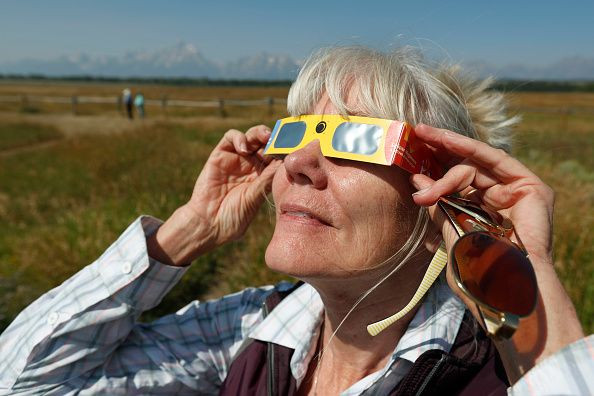Solar Eclipse Glasses: How To Use, Where To Put Plastic Frames

If you viewed the total solar eclipse Monday there’s a good chance that you had eclipse glasses to view it. Glasses sold out in stores, online and there were even some fake glasses that were sold to customers who were desperate to get a look at the sun.
The specially designed glasses and viewers are so dark that pretty much the only thing wearers can see through them is the sun. Even looking directly at a light inside or looking around outside on a bright day wearers won’t see much. Only the actual sun can be seen through the glasses that are made of special light blocking materials. But now that the eclipse is over what should you do with the glasses?
You have a few options that require your glasses be in good condition with no scratches or scuffs or holes in them. Any damage to the lens of the glasses or viewer renders it unusable for viewing the sun because it will no longer properly protect the eyes of the wearer or user from the harmful and strong rays from the sun.
The first thing you can do with your glasses is put them in a safe place where you’ll remember their location and can protect their lenses for future use. You can use eclipse glasses to look at the sun whenever you want, they don’t have to be used specifically during an eclipse event. You can use them to see the sun any other day, or you can save them for future eclipse events. The next total solar eclipse in the continental United States will occur in 2024 but there will be others around the world before then.
Some viewers have notices that say they should be discarded after one to three years or that you shouldn’t look through it for more than three minutes at a time. As long as the viewers are newer than 2015 and is ISO 12312-2 compliant these warnings can be disregarded, says NASA.
If you don’t plan on reusing your glasses in the future, you can also donate them so that they go to people who will use them. There are a number of organizations that will take your used glasses and then redistribute them to people around the world who wish to view an eclipse.
The group Astronomers Without Borders will happily take your old eclipse glasses to redistribute to those in need in other countries. Just be sure that if you package and mail your glasses or viewer that you do so carefully as not to damage the lens.
If you prefer to recycle your glasses rather than donating them or saving them just pop out the lenses before you put the cardboard glasses or viewer frame in the recycling bin. The material the lenses are made of are not recyclable although the cardboard around the shiny material is.
© Copyright IBTimes 2025. All rights reserved.


















